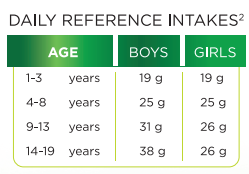Role of Fiber-S in Kid’s Health
FIBER-S is a soluble fiber that dissolves in water and forms a gel-like substance that improves gut health by maintaining a healthy gut flora, relieves constipation, helps in various gastrointestinal disorders and much more. Did you know that 9 out of 10 children do not receive the daily recommended amount of fiber in their diets? The effect of dietary fiber on adults and chronic diseases is well documented, but a tremendous gap concerns the relationship between fiber and childhood health.
Over the past years, more research has been published on dietary fiber and constipation in children. A community-based survey on the prevalence of constipation in children 3–5y old in Hong Kong found that almost 30% had constipation. The mean dietary fiber intake of these children was low (4.1 g/d), less than one-half of the dietary fiber intake as per recommended. Similarly, one-third of children in the United Kingdom (mean age of 10y) were constipated. In both studies, children who were not constipated had higher fiber consumption. In a sample of Irish children ages 5–8y old, the incidence of constipation was twice as high in children with inadequate fiber intake than in children with adequate fiber consumption levels (13.6 vs. 6%). Thus, evidence supports an association between low intakes of fiber and the high prevalence of childhood constipation.

In children, analysis of NHANES data showed that the reduced risk for overweight/obesity associated with whole-grain intake was driven by the dietary fiber content of the grains. Lack of DIETARY FIBER was associated with higher body fat in a sample of British children and 15g of supplemental dietary fiber along with an energy-restricted diet was found to result in a 2kg higher weight loss. Another 2-y follow-up study in 7- to 11-y-old Latinas living in the US showed that increasing levels of SOLUBLE FIBER were associated with a slight reduction of visceral body fat and that decreasing fiber intakes were associated with a 10% increase of visceral body fat.
Few studies also show associations of dietary intakes with fasting blood glucose concentrations. Because increasing obesity prevalence is associated with dysregulation of glucose concentrations, the examination of dietary interventions to prevent and/or treat metabolic syndrome (symptoms of diabetes and cardiovascular disease along with obesity) is urgently needed. For instance, supplementation with SOLUBLE FIBER decreased postprandial glucose in children with T2DM.

Soluble fibers also help in better micronutrient absorption and improve immunity as well. FIBER-S – a unique soluble dietary fiber is easy to add in any children’s diet as it is convenient with no colors, flavors, and sugars. So any mother can add this to water, soup, juices, or drinks, and also sprinkle it over any other food items.
